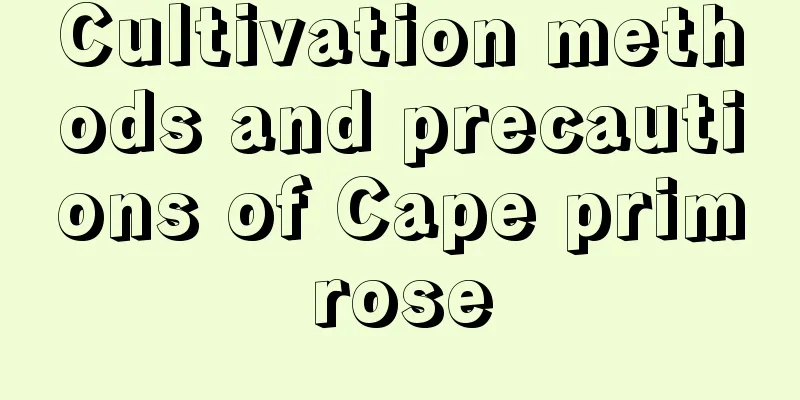Diseases and Pests of Begonia Bulbosa and Their Control

Common diseases of bulbous begoniapowdery mildewThe disease mainly harms the above-ground parts of bulbous crabapple plants. The specific symptoms are that in the early stage of the disease, sporadic white mildew spots will appear on the affected parts, and gradually expand and connect into one piece, the leaves will turn yellow and fall off, and even the flowers will not bloom. Excessive nitrogen fertilizer, poor ventilation, and overly dense planting can easily induce powdery mildew. The prevention and treatment methods are as follows: ①Control the amount of nitrogen fertilizer used; ② Before the disease occurs, spray 400-600 times diluted 60% mancozeb wettable powder once every two weeks. In the early stage of the disease, spray 1000 times diluted 70% thiophanate-methyl or 1000-2000 times diluted 15% trifloxypropyl group-9 for prevention and control. Stem rotThe disease is more serious in spring and on cloudy days. The specific symptoms are that in the early stage of the disease, small dark spots in the shape of water stains will appear on the stems and leaves of the plant, and they will gradually expand. White filaments will appear on the diseased parts, and brown granules will appear after drying. Prevention and control methods: In the early stage of the disease, you can spray carbendazim or 65% dichlorodiphenyltrichloroethane 600-800 times solution. Botrytis cinereaThe disease is very harmful and can damage the entire plant, especially the stem. In the early stage of the disease, water-soaked spots appear on the stems, gradually expanding into a soft rot state, causing the plant to fall over. This disease is more likely to occur when the humidity is too high or the plants are planted too densely. The prevention and treatment methods are as follows: ① Pay attention to ventilation and light transmission, and control humidity; ② In the early stage of the disease, spraying 70% thiophanate methyl solution 1500 times or 50% mancozeb solution 800-1000 times once every 10 days can effectively prevent and control the disease. Leaf spotThe symptoms are as follows: in the early stage of the disease, the lesions are blister-like, and the color slowly changes from dark green to transparent yellow, and gradually expands into dark brown dead spots with white mucus. Later, they perforate and rupture, causing the death of the plant. The prevention and treatment methods are as follows: ①Disinfect the flower soil frequently. ② The planting density should be reasonable, pay attention to ventilation and light, and avoid splashing water on the leaves when watering. Remove diseased leaves promptly. ③ When the disease is serious, spray 4000 times diluted 72% agricultural streptomycin in time. Common Pests of Begonia bulbiferaCommon insect pests include scale insects, aphids, leaf rollers, thrips, etc. For scale insects, you can spray with 1000 times diluted 40% oxydemeton-methyl emulsifiable concentrate; for thrips, you can spray with 4000 times diluted potassium permanganate; for leaf rollers, you can spray with 0.1 pyrethrin emulsifiable concentrate and 2000 times diluted dermatophyllum, etc. |
<<: Common diseases and pests of holly and their control
>>: Kale pests and diseases and their control
Recommend
The main value of Spiraea hemp
Can be used in gardens The flowers of the spirea ...
Four stages of cineraria care
Cineraria seedling stage When growing cineraria, ...
Osmanthus species classification, osmanthus species classification and differences
1. Variety classification 1. Golden Osmanthus: Go...
Sweet potato planting technology and management methods
As a widely grown and high-yield crop, the harves...
The best time to repot juniper bonsai: suitable months and methods for repotting
The right time to repot juniper bonsai Juniper bo...
How to loosen compacted soil? Ten methods to improve compacted soil and make it soft
Rice vinegar Rice vinegar contains a lot of organ...
Does okra prefer shade or sun?
Does okra prefer shade or sun? Okra, also known a...
Cultivation methods and precautions of Gaoyue Rhododendron
1. Maintenance methods 1. Temperature: Gaoyue aza...
How to water cymbidium
1. First of all, you need to choose a clay flower...
Schlumbergera flower maintenance
1. Control the amount of water Christmas cactus i...
What trees can peppers be grafted on (what rootstocks are used for grafting pepper trees)
What tree is best for grafting peppers? Peppers c...
Common diseases of lotus bamboo and their prevention and control methods
Common diseases of lotus bamboo: Anthracnose Symp...
What is the legend of the ginger lotus?
1. Flower language of ginger lotus 1. Noble and e...
Does lettuce prefer shade or sun?
Does lettuce prefer shade or sun? Lettuce is rela...
Greenhouse pitaya planting technology and management How to plant pitaya
Pitaya is a tropical fruit plant, generally grown...









